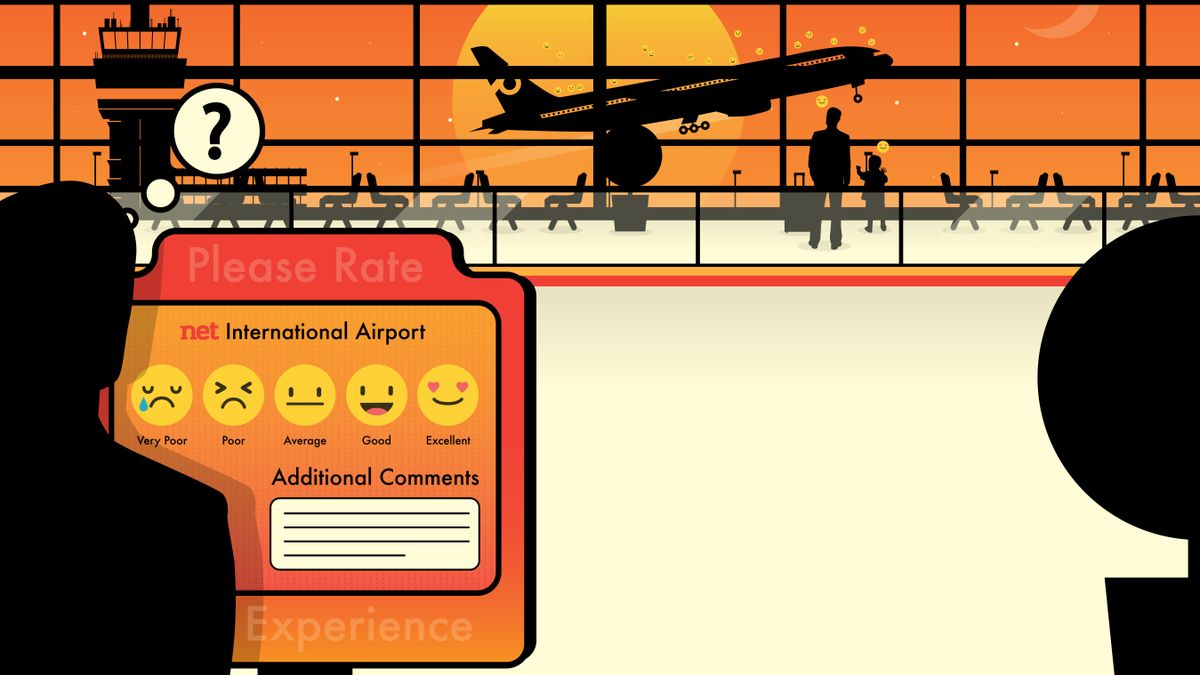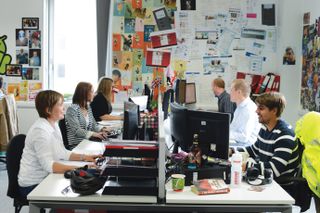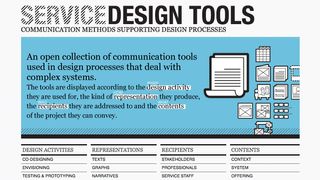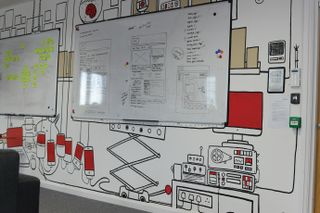The ultimate guide to better service design
Revamp your design team and understand customers better.

Is service design more than just expensive brainstorming techniques? After all, not everyone has a leadership role in their design or product teams, and service design might sound like something for the stakeholders to philosophise about.
“Better to get on with useful code and design techniques ,” some might understandably suggest. However, brand and product experiences are influenced by outside factors, some of which are beyond the design team’s control.
Therefore, to consider all potential customer touch points and avoid fragmenting into disjointed experiences, design teams can start thinking of themselves as holistic service delivery units with all members contributing valuable domain knowledge such as business, marketing, design, code, server technologies and data systems.
Service design creates opportunities for team collaboration as well as increasing the potential to successfully meet audience metrics or conversion and retention goals.
What does AI have to do with it?
The current rise in artificial intelligence and robotics is leading to the rethinking of, and sometimes the entire overhaul of, established product roadmaps and ecosystems, as well as their related user experiences, business logic, server infrastructures and data sources.
These new paradigms lead to consumer-focused cognitive realms. Using service design as a discipline to account for the intersections of people, infrastructure, communication and physical components in planning and organising your product, results in a map or sequence of events and functions that effectively represent your product’s or organisation’s digital and physical interactions with its audiences.

At the same time, it also offers an opportunity to generate ideas for innovation. Apart from honing a user-friendly and relevant product, service design can uncover ways for a company to stay competitive by aligning its capabilities to the service sustainably.
Get the Creative Bloq Newsletter
Daily design news, reviews, how-tos and more, as picked by the editors.
Already, machine learning is making different media, data and transactions accessible in visual and auditory formats, pushing the boundaries of familiar human-computer interactions. This is encouraging designers to reframe current user experiences beyond traditional inputs and outputs to service.
Introduction to service design
Service design methods go hand in hand with tried and tested product design methods, while adding new facets to the design process. The different schools of thought generally converge around these general methods:
- Definition of actors (users) and actions (steps taken by users and behind the scenes) involved in the services that are being designed.
- Scenarios, use cases and sequences of actions and actors’ roles usually captured in a service blueprint.
- Components of the service, including people’s contextual information, interactions, technical systems, business logic and data sources.
The variation in the methods above helps define the requirements for the product or service and its underlying system that supports it. They all, however, make wide use of anthropology and ethnography disciplines, including video-ethnography and other contextual inquiry techniques to really gain a deep understanding of users’ behaviour.
Other familiar user experience research methods are widely used including contextual interviews, personas, task analysis and journey mapping to capture vital information about users’ lives and what they go through on a day-to-day basis to make the product or service relevant.
The end result is a blueprint of the service that details the components and interactions of the product by using well-known techniques from software development to capture functional requirements of an app. This includes service scenarios and use cases, but also goes beyond that by capturing key user behaviour and expectations.
Jump-starting a service design culture
Service design methods allow us to develop and iterate a future for our customers with enough flexibility baked in to change direction and move forward in to comfortable team development cadences. With such a set-up, we can manage progress, research implementation of up-and-coming trends and technologies, and have the ability to deliver better and faster services with true business value such as lower operating costs and efficiencies.
However, service design methods and strategy alone won’t get your organisation to the future your customers will exist in. A true service design culture must exist to get your digital teams working on what matters most while iterating on solutions and improving existing products.

Additionally, considering artificial-intelligence opportunities in our products through service design methods puts us in tune with our customer expectations and gives us the ability to provide actionable users’ data to our stakeholders.
As stated earlier, service design practices are generally related to the disciplines of product design, interaction design and systems design, and are represented in the following phases:
01. Discovery
Here the aim is to first gain a full understanding of the problem(s) that need solving and the overall context. The discovery phase is very hi-octane in the sense that there is a lot of idea generation and sharing while uniting the teams, at the same time that expectations are constantly being reset, especially on the part of stakeholders.
We understand their business dilemmas and work with them to remain flexible while maintaining integrity to the user experience and long-term vision for the product(s). Activities include: design workshops and customer journey mapping.
02. Design
Findings from the previous phase are synthesised through arduous working sessions that sometimes turn into passionate arguments but eventually result in high-level concepts and other design artefacts.
This is a good time for developers and system architects to weigh in with their valuable input as such decisions impact the technical architecture and business requirements, and result in support of an enhanced digital experience. The design team does well in establishing a systematic way to design aspects of the enhanced user interface that is immediately followed by A/B testing using remote services.
The findings of such tests can be presented to the team along with the new designs. Such practice leads to addressing potential and sometimes blatant “design problems” that can easily cost more to fix once a product or app has been launched.
If ever the team cannot come to a unanimous agreement on the design, prototyping and testing can resolve this. Activities include: user interface sketching, wireframes and prototyping.
03. Development
At this stage, a unanimous agreement has been set by the team and developers sometimes pair with other disciplines to produce and deliver all components. After a solution is launched, teams observe the success against predefined goals and metrics, always keeping an eye out for future improvements.

Where to begin
If there is one service design method that can be easily exploited and leads to many gains, it is the ubiquitous customer journey map.
I have personally been involved in journey map-design sessions where lead system architects and developers not only offered straight information about what can or can’t be achieved, but also were the most eager to share improvements and insights about the user’s journey with an unmatched empathy for the product user when describing this.
Customer journey mapping
A user journey map can define the ecosystem of users, processes, tools, systems and data that endorse the user experience. Consuming a service means consuming an experience, a process that extends over time. The customer journey truly illustrates how our audiences perceive and experience the product over time. It also considers people’s lives before and after they interact with the app, leading to valuable insights.
A critical first step in creating a customer journey is to decide the starting and stopping points, as these serve as a safety net over which the service is explored, organised and visualised with the methods discussed in this article. When designing journey maps, identify and arrange the sequence of user manual and automated tasks to achieve a goal while engaging with a product.
Journey maps promote a shared understanding of all the elements that make up user experiences including what a user is thinking, feeling and needing. However, instead of being a “catch all” or a design where every possible outcome is covered, journey maps are most useful when the end state of the journey achieves a desired goal, as this allows the design team to target specific user behaviours, attitudes and motivations – and what can turn them away.
The effect of letting users drive their experiences
Most of the time, users understand their needs better than anyone, although at times they might not be able to vocalise it like a designer would in creating a mental model. For example, when designing our services, we must consider what customers do or do not understand.
This can lead to improvements in terms of support and organisational changes, even if we’re not the ones responsible for them. The thinking outlined in this article proposes some valuable techniques and insights that can lead to a service design transformation that feeds up the organisation.
Start small by sharing with like-minded people, looking at issues that arise from another point of view and arguing using well organised information or proposing a user journey map. In time, others will get involved, moving the entire organisation closer to a holistic service delivery mindset.
Related articles:

Thank you for reading 5 articles this month* Join now for unlimited access
Enjoy your first month for just £1 / $1 / €1
*Read 5 free articles per month without a subscription

Join now for unlimited access
Try first month for just £1 / $1 / €1
